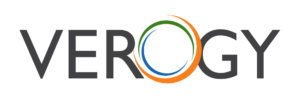As you begin planning your next renewable energy initiative, foreseeing and addressing potential issues before they slow you down is critical to the ongoing success of your project. From design to financing, a little planning can go a long way by minimizing the amount of work your team has to do later in the project. That’s why our team at Verogy takes the time to understand the unique needs of each client we work with before we even break ground. Here are some of the critical factors we consider as we guide our partners through the solar development process.
Defining Budget
One of the largest—if not the largest—constraints limiting a solar energy project is capital expenditure. Your organization’s budget ultimately establishes the scope of your clean energy project, so you can achieve the right balance of costs and results. Beginning your project by clarifying how much capital you can invest in your solar energy system is a fundamental first step. From there, your team can perform a comprehensive cost-benefit analysis to fine-tune your budget. Beginning your project with a clear financial direction, your organization can more effectively explore your options and make optimal sustainable energy choices.
Understanding Solar Design
Solar design best practices are not only about building a solar system that withstands the test of time; they’re also about aligning with your facility’s overarching design elements and environment. Fundamental design principles include:
- Panels that are all the same color
- Panel edges should be parallel to the edge of the roof
- All panels should be aligned at the same height (generally 3 inches off the roof)
- Conduits and infrastructure are concealed as much as possible
On top of solar installations that are aesthetically appealing, you need solar equipment that’s built to last if you want to maximize the return on your investment. When selecting components, don’t make the mistake of cutting costs if that means sacrificing quality. You’ll likely end up paying for it in the long run. While tier 1 solar panel manufacturers come with higher upfront costs, those costs are generally backed by extended warranties, hands-on support, improved performance, and increased lifespans.
As you select system components, make sure to:
- Confirm that component warranties are appropriate for your installation
- Understand potential points of failure and mitigate risks accordingly
- Research local codes and regulations to design a compliant system
Simplifying Maintenance
One of the most significant benefits of deploying solar energy systems is how little maintenance they require. Other than annual inspection and panel cleaning, solar energy infrastructure requires almost no ongoing maintenance. However, there will inevitably come a time when you need to remove a panel, access conduits, or inspect other components. With that being said, thoughtful solar panel development incorporates strategies and elements that simplify ongoing maintenance and repairs. By doing so, you can not only create safer conditions; you can create a more efficient work environment at the same time.
Your Renewable Energy Engineering Experts
Whether you’re planning your first solar energy project or your fourth, having the guidance of experts can make all the difference to the overall success of your plans. From consulting on permits to deploying turnkey solutions, our team at Verogy has the hands-on experience required to make the solar development process as straightforward as possible. Get in touch with our solar experts today to start exploring the possibilities for the future.




